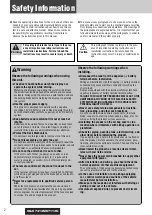
Page 101
Map
The software works with digital maps which are not simply the computerised
versions of traditional paper maps. Similarly to the paper road maps, the 2D mode
of digital maps show you streets, roads, and elevation is also shown by colours.
In 3D mode, you can see the altitude differences, for example valleys and
mountains, elevated roads, and in selected cities 3D landmarks and 3D buildings
are also displayed.
You can use digital maps interactively: you can zoom in and out (increase or
decrease the scale), you can tilt them up and down, and rotate them left and right.
In GPS-supported navigation, digital maps facilitate route planning.
North-up map orientation
In North-up mode the map is rotated so its top always faces North. This is the
orientation for example in Find on Map. See also: Track-up map orientation.
Road Safety Camera
A special Place of Interest type for speed cameras and red light cameras. Different
data sources are available. You can configure the software to warn you when you
approach one of these cameras.
Detecting the location of Road Safety Cameras is prohibited in certain countries.
It is the sole responsibility of the driver to check whether this feature can be used
during the trip.
Route
A sequence of route events, i.e. manoeuvres (for example, turns and roundabouts)
to reach the destination. The route contains one start point and one destination.
The start point is the current (or last known) position by default. If you need to see
a future route, the start point can be replaced with any other given point.
Track-up map orientation
In Track-up mode the map is rotated so its top always points in the current driving
Summary of Contents for TRAX4310
Page 1: ...TRAX4310 In Car Navigation...
Page 111: ...Page 111 Notes...












































